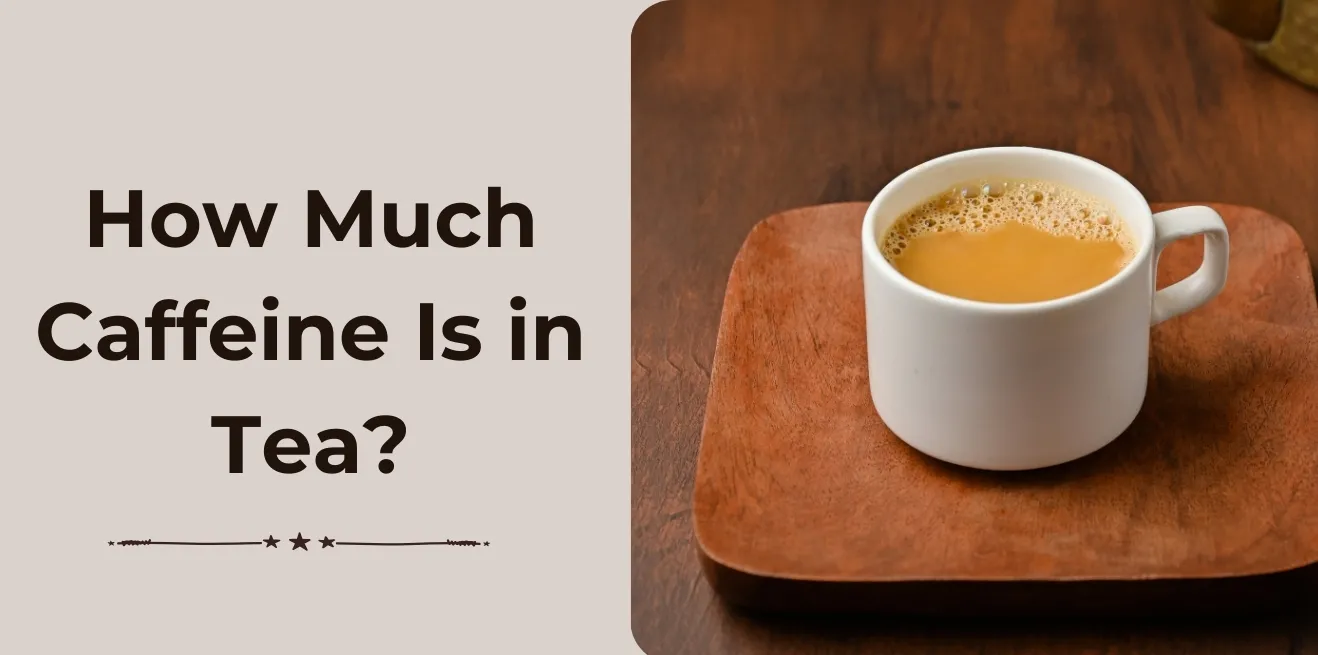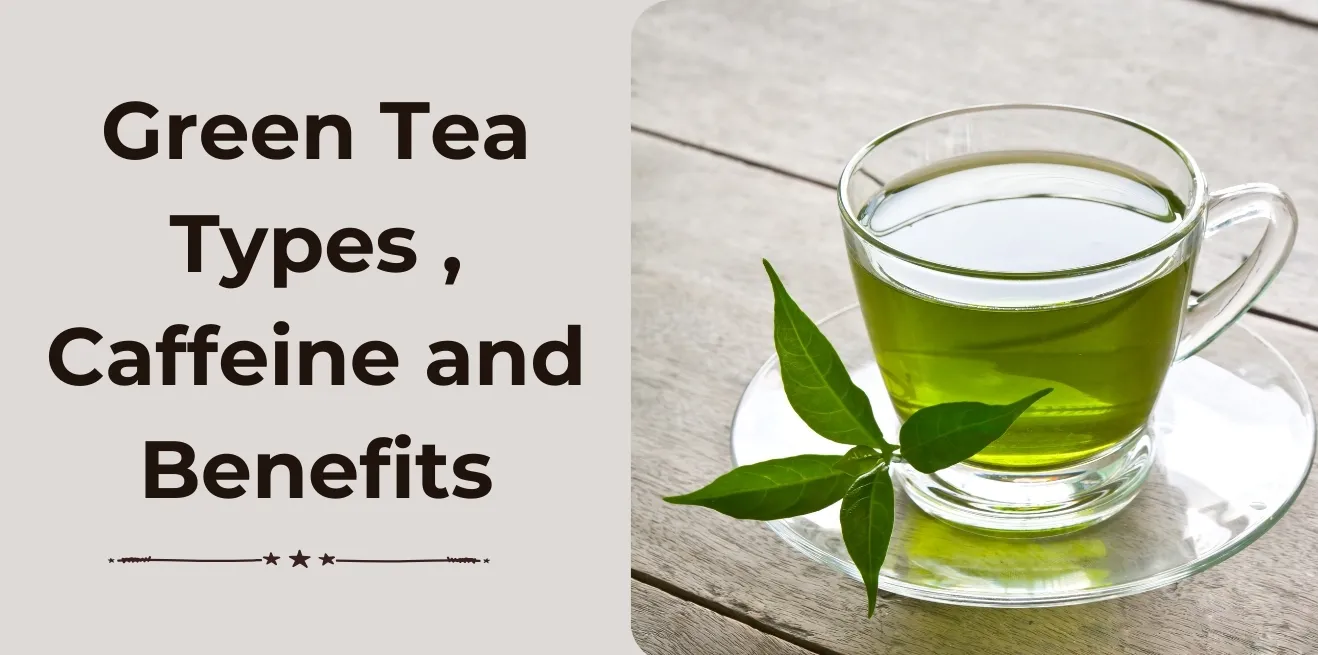Tea is loved all around the world for its comforting taste and health benefits. But when it comes to caffeine in tea, many people are unsure about how much they are actually drinking. Some teas have a lot of caffeine, while others have very little or none at all. Whether you are choosing tea for energy, relaxation, or health, understanding caffeine in tea can help you pick the right type for your needs. In this article, we explain how much caffeine different teas have, how it affects your body, and how to enjoy tea without overdoing it.
1. Not All Tea Is the Same
Some people think all teas are the same or that all teas come from herbs. This is not true. Herbal teas, like chamomile or peppermint, usually do not have caffeine. But regular teas—like black, green, white, and oolong—do come from the tea plant and contain different amounts of caffeine.
2. It’s Important for Certain People
Knowing how much caffeine is in tea matters, especially for:
- Caffeine-sensitive people – Some people feel nervous, shaky, or can’t sleep if they have too much caffeine.
- Pregnant people – Doctors often advise them to keep caffeine low to help protect the baby’s health.
- Everyday tea drinkers – Even people who enjoy tea casually may want to know how it adds to their daily caffeine intake.
3. Different Teas, Different Levels
Not all teas have the same amount of caffeine. For example:
- Black tea has more caffeine than green tea.
- White tea usually has less caffeine than both.
- Oolong tea falls somewhere in the middle.
Understanding these differences helps people choose the right tea for their needs—whether they want more energy or a calming drink without caffeine.
Does Tea Contain Caffeine?
✅ Short Answer: Yes — Most Teas Do
Most types of tea contain caffeine. This includes black, green, white, and oolong teas. They all come from the same plant, called Camellia sinensis, which naturally has caffeine.
Herbal Teas Are Different
Herbal teas, also called herbal infusions, are not made from the tea plant. Instead, they are made from dried flowers, fruits, herbs, or spices. Common examples include chamomile, peppermint, and hibiscus. These teas are naturally caffeine-freeand are a good choice for people who want to avoid caffeine.
What Affects the Caffeine Level in Tea?
The amount of caffeine in tea can change depending on a few things:
- Type of tea – Black tea usually has the most caffeine, while white tea often has the least.
- Processing method – How the tea leaves are dried and prepared can raise or lower the caffeine content.
- Brewing time and temperature – Steeping tea longer or using hotter water usually draws out more caffeine.
- Portion size – Using more tea leaves or a bigger cup means more caffeine.
So, while most teas do have caffeine, the exact amount can vary a lot. Knowing what affects caffeine levels helps people choose the right tea for their lifestyle.
How Much Caffeine in Tea? (By Type & Cup Size)
The amount of caffeine in tea depends on the type of tea and how it’s made. Below is a simple guide based on an 8-ounce cup, which is the size of a small mug. Keep in mind that brewing time, water temperature, and how strong you make the tea can change the final caffeine amount.
Black Tea – 40–70 mg per 8 oz
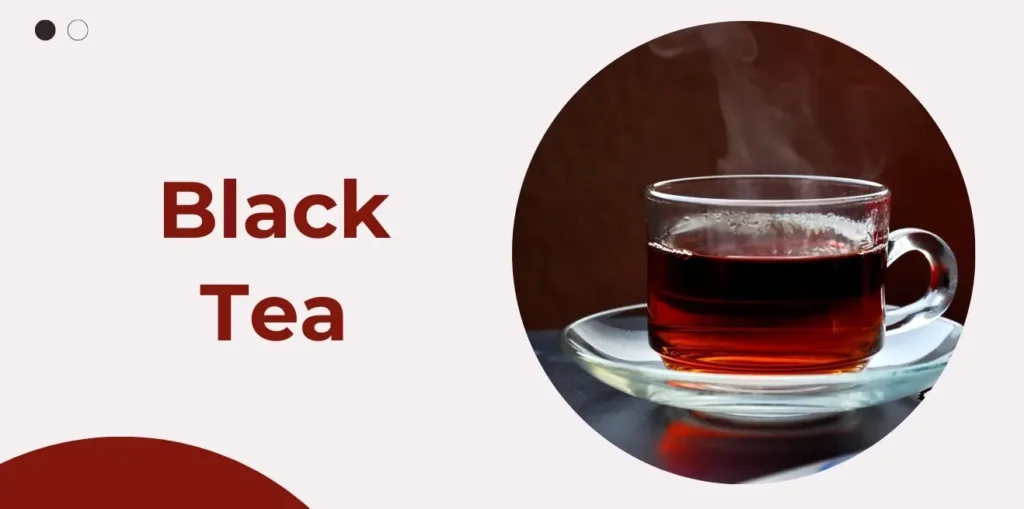
Black tea has the most caffeine among common teas. It gives a strong flavor and more energy. Popular black teas include English Breakfast and Earl Grey.
Green Tea – 25–45 mg per 8 oz
Green tea has less caffeine than black tea. It has a lighter taste and is often chosen for its health benefits. Types include Sencha and Jasmine green tea.
Oolong Tea – 30–50 mg per 8 oz
Oolong tea falls between black and green tea in both flavor and caffeine. It has a smooth, slightly fruity taste and moderate caffeine.
White Tea – 15–30 mg per 8 oz
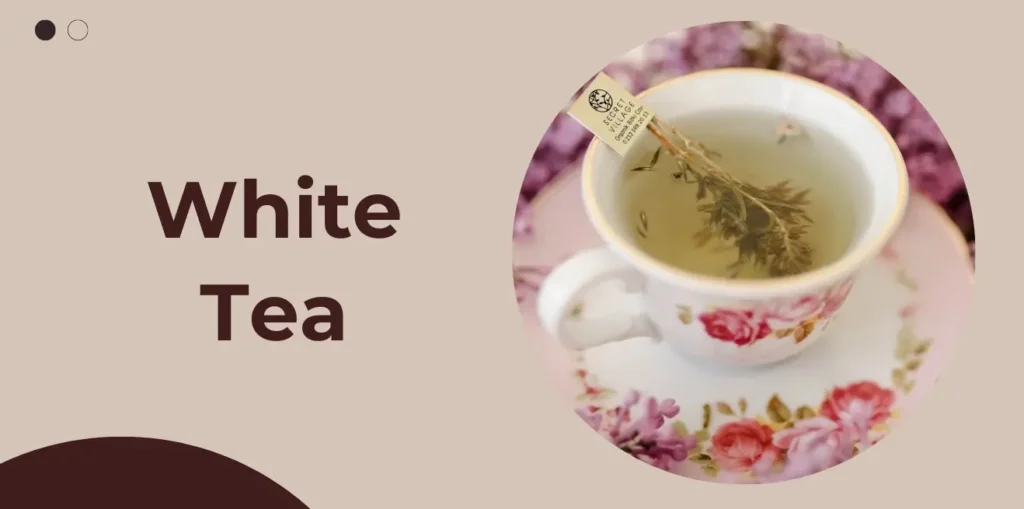
White tea has the least caffeine among regular (non-herbal) teas. It has a very light flavor and is a good option for those who want low caffeine.
Pu-erh Tea – 30–60 mg per 8 oz
Pu-erh is a fermented tea with a rich, earthy flavor. Its caffeine level can vary but is usually similar to black tea.
Matcha (Powdered Green Tea) – 60–80 mg per 8 oz
Matcha contains more caffeine because you consume the whole powdered leaf, not just a brew. It gives a stronger energy boost than regular green tea.
Herbal Tea (Chamomile, Peppermint, etc.) – 0 mg
Herbal teas are naturally caffeine-free. They’re made from herbs, flowers, and fruits, not from the tea plant.
Important Note
The brewing time, water temperature, and amount of tea used all affect how much caffeine ends up in your cup. Steeping tea longer or using more leaves usually means more caffeine.
Ingredient Breakdown: Where the Caffeine in Tea Comes From ?
Caffeine in tea does not come from just one place. Several factors decide how much caffeine ends up in your cup. Here’s a simple breakdown:
Camellia sinensis Leaf (The Actual Tea Plant)
All true teas—like black, green, white, oolong, and pu-erh—come from the Camellia sinensis plant. The leaves of this plant naturally contain caffeine. The type of tea made from these leaves, and how the leaves are handled, affects the caffeine amount.
Processing Method (Fermentation = More Caffeine)
The way tea leaves are processed plays a big role in caffeine levels.
- More processing and fermentation (like with black and pu-erh teas) usually means more caffeine.
- Less processing (like with green and white teas) keeps caffeine levels lower.
Fermentation changes the leaf’s chemistry, which can either release or lock in caffeine.
Added Extracts (e.g., Matcha, Guarana in Blended Teas)
Some teas are blended with other ingredients that add extra caffeine.
- Matcha is powdered green tea and naturally has more caffeine.
- Some energy teas may include guarana or other plant extracts that boost caffeine even more.
Always check the label if you are trying to manage your caffeine intake.
Tea Bags vs Loose Leaf vs Powdered Tea
The form of tea you use can also change caffeine content:
- Tea bags often have smaller, broken leaves, which can release caffeine faster during brewing.
- Loose leaf tea usually has larger pieces, which might steep more slowly and release caffeine more gently.
- Powdered tea like matcha is very strong because you consume the whole leaf, not just the brewed water.
Caffeine Comparison: Tea vs Other Popular Drinks
Tea is often thought of as a lighter drink, but it still contains caffeine. To understand how it fits into your daily habits, it helps to compare it with other drinks that people commonly enjoy. Here’s a detailed look at how much caffeine is in tea compared to coffee, energy drinks, soda, matcha, and even chocolate.
Tea vs Coffee (Drip, Espresso)
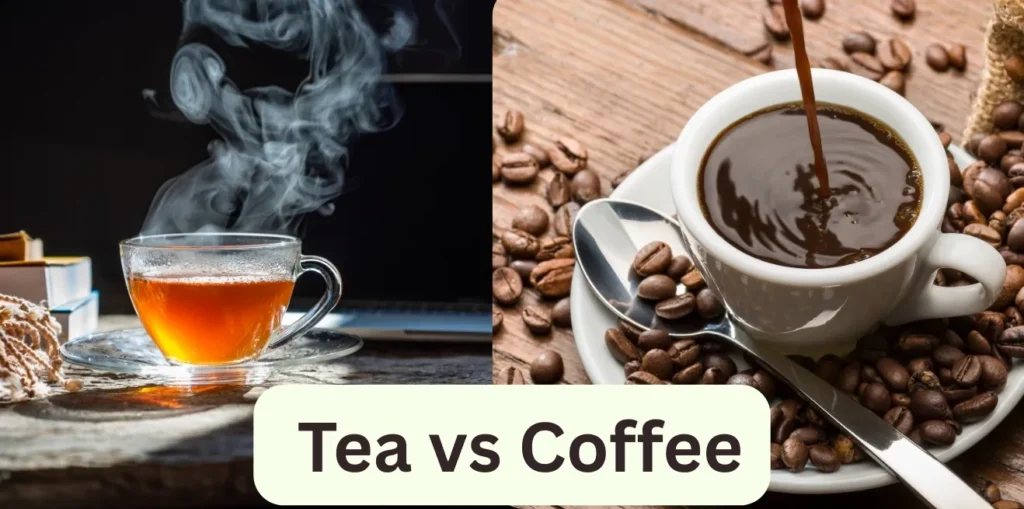
Coffee is one of the strongest sources of caffeine in most people’s diets.
- A regular drip coffee has about 95 to 120 milligrams of caffeine in one 8-ounce cup.
- A single shot of espresso (only 1 ounce) has about 63 milligrams, but since it’s much smaller, people often drink more than one shot.
In comparison:
- A cup of black tea has around 40 to 70 milligrams of caffeine in the same 8-ounce serving.
Tea vs Energy Drinks (Red Bull, Monster)
Energy drinks are designed to give a fast burst of energy.
- An 8.4-ounce can of Red Bull has about 80 milligrams of caffeine.
- A 16-ounce can of Monster has around 160 milligrams, which is more than a strong cup of coffee.
In comparison:
- A cup of black tea or matcha has about 40 to 80 milligrams, depending on how it’s made.
Tea vs Soda (Coke, Pepsi)
Sodas do contain caffeine, but the amount is much lower.
- A 12-ounce can of Coca-Cola has about 34 milligrams of caffeine.
- A 12-ounce can of Pepsi has about 38 milligrams.
In comparison:
- An 8-ounce cup of black tea has more caffeine, usually between 40 and 70 milligrams.
Tea vs Matcha
Matcha is a powdered form of green tea. Unlike regular tea, where you steep leaves and then remove them, with matcha, you mix the powder directly into the water and drink the whole leaf.
- One 8-ounce cup of matcha has about 60 to 80 milligrams of caffeine.
- A regular green tea has about 25 to 45 milligrams.
Tea vs Chocolate or Cocoa
Even chocolate has caffeine, but the amount is very small.
- A 1-ounce square of dark chocolate has about 12 to 25 milligrams of caffeine.
- A cup of hot cocoa has only about 5 to 10 milligrams.
- A white tea or green tea has more—around 15 to 45 milligrams, depending on the type.
Is That Too Much? Caffeine Limits from Tea Explained
It’s easy to enjoy several cups of tea in a day, but it’s important to know how much caffeine is safe. While tea has less caffeine than coffee or energy drinks, drinking too much of it can still cause problems—especially for people who are sensitive to caffeine.
FDA Recommendation: 400 mg/day (All Sources Combined)
The U.S. Food and Drug Administration (FDA) says that most healthy adults can safely consume up to 400 milligrams of caffeine per day. This total includes all sources—tea, coffee, energy drinks, soda, chocolate, and even some medicines.
Let’s see how that might add up using tea:
- Black tea: about 40–70 mg per cup
- Green tea: about 25–45 mg per cup
- Matcha: up to 80 mg per cup
This means someone could drink about 5–6 cups of black tea or 8–10 cups of green tea before reaching the 400 mg limit—assuming they aren’t getting caffeine from other sources.
How Many Cups of Tea Is Too Much?
How much tea is “too much” depends on the person.
- If you only drink tea and nothing else with caffeine, 3 to 5 cups a day is usually safe for most people.
- If you also drink coffee, soda, or energy drinks, you should keep track of how everything adds up.
Some people are more sensitive to caffeine than others. Even small amounts may affect them, causing side effects after just 1 or 2 cups.
Symptoms of Too Much Caffeine from Tea
Drinking too much tea in a short period—or having more caffeine than your body can handle—can lead to some unpleasant symptoms. These include:
- Heart problems – You might feel your heart beating faster or irregularly.
- Sleep troubles – It may be hard to fall asleep or stay asleep, especially if you drink tea late in the day.
- Nausea or stomach upset – Strong tea or too much caffeine can make your stomach feel uneasy.
- Nervousness or shakiness – Some people may feel restless or anxious if they have too much caffeine.
- Headaches – In some cases, caffeine can trigger headaches, especially when you’re used to having it and suddenly don’t.
Tip: If you notice any of these signs, it’s a good idea to cut back on caffeine and see how you feel.
Tea for Different Age Groups: How Much Is Safe?
Tea is often seen as a healthy and calming drink, but caffeine affects people in different ways. Age, health, and sensitivity all play a role in how much tea is safe to drink. Here’s how tea fits into the diets of different groups of people:
Children & Teens
Children are much more sensitive to caffeine than adults.
- Health experts suggest no more than 100 mg of caffeine per day for teens, and even less for younger children.
- Just one cup of black tea or two cups of green tea could reach or go over that limit.
Why it matters:
Caffeine can affect sleep, mood, and concentration in kids and teens. It may also lead to dependence if consumed regularly. Herbal teas with no caffeine, like chamomile or rooibos, are safer options for young people.
Pregnant or Breastfeeding Individuals
Doctors often recommend that people who are pregnant or breastfeeding limit caffeine to under 200 mg per day.
- That’s about 2 to 3 cups of black tea or 3 to 4 cups of green tea.
- Caffeine crosses the placenta, so the baby can be affected by what the parent drinks.
Why it matters:
Too much caffeine during pregnancy may increase the risk of low birth weight or other complications. For breastfeeding parents, some caffeine may pass into breast milk and affect the baby’s sleep. It’s best to choose lower-caffeine teas or herbal options after checking with a doctor.
Caffeine-Sensitive Adults
Some adults feel strong effects from even a small amount of caffeine.
- These individuals might experience shakiness, nervousness, headaches, or trouble sleeping after just one or two cups of tea.
- Even mild teas, like white or green tea, can cause discomfort if the person is very sensitive.
What helps:
Sticking to low-caffeine or caffeine-free herbal teas is usually the best choice. These still offer flavor and comfort without the side effects.
Older people & People with Health Conditions
Older adults and people with certain health conditions should also watch their caffeine intake.
- Too much caffeine may cause heart palpitations, raise blood pressure, or upset digestion.
- Some medications can also interact with caffeine, making it important to check with a doctor.
Tip:
Many Older People enjoy tea for its soothing effects, but choosing types with less caffeine or brewing them for a shorter time may help avoid unwanted symptoms.
How Tea Affects the Body
Tea is more than just a warm drink. Because it contains caffeine and other natural compounds, it can have a real effect on how you feel—both in good and bad ways. Here’s what to expect from drinking tea regularly:
Gentle Energy Boost
Tea gives a lighter, smoother energy boost compared to coffee or energy drinks.
- The caffeine in tea works more slowly, which means you feel alert without a sudden rush or crash.
- This makes it a popular choice for people who want to stay awake without feeling too wired.
Sustained Focus (Due to L-theanine in True Teas)
Tea contains a special compound called L-theanine, found in true teas like black, green, and oolong.
- L-theanine works with caffeine to help you focus and stay calm at the same time.
- This combination makes tea useful for studying, reading, or working.
Why it’s unique:
Unlike coffee, which can make some people feel jittery, tea helps you stay sharp without the stress or tension.
Impact on Sleep & Anxiety (Even from “Mild” Teas)
Even teas with lower caffeine—like green or white tea—can still affect sleep, especially if you drink them in the evening.
- Caffeine stays in the body for several hours.
- For some people, even one cup in the afternoon can lead to trouble falling asleep at night.
Also, people with anxiety may feel more nervous or unsettled if they have too much tea. Switching to caffeine-free herbal teas in the evening is often a better choice.
Digestive & Heart Effects at High Intake
Drinking too much tea can sometimes cause health issues, especially when consumed in large amounts.
- Stomach upset or acid reflux may happen from strong black or green tea.
- Heart rate can increase, and some people may feel chest discomfort or palpitations.
- Tea also contains compounds called tannins, which may block iron absorption if taken in excess, especially during meals.
Best practice:
Keep your intake balanced and listen to your body. If you feel unwell after tea, it may be a sign to cut back or switch to a gentler type.
Low-Caffeine and Caffeine-Free Tea Alternatives
If you’re trying to cut down on caffeine or avoid it completely, there are still plenty of great tea options to enjoy. Some teas are naturally free of caffeine, while others are made by removing most of the caffeine from traditional tea leaves.
Herbal Teas (Chamomile, Peppermint, Hibiscus)
Herbal teas are made from plants, flowers, and fruits—not from the tea plant (Camellia sinensis), so they are naturally caffeine-free.
- Chamomile is calming and often used before bed.
- Peppermint is refreshing and can help with digestion.
- Hibiscus has a tart, fruity flavor and is rich in antioxidants.
Why choose them?
These teas are safe for all ages and are great for people who want the comfort of tea without any caffeine. They’re also a smart choice in the evening when you want to relax.
Rooibos Tea
Rooibos (pronounced ROY-boss) comes from a plant in South Africa and is naturally caffeine-free.
- It has a smooth, slightly sweet taste and can be enjoyed hot or cold.
- It’s rich in antioxidants and low in tannins, so it’s gentle on the stomach.
Why it’s a favorite:
Rooibos is often used as a base for caffeine-free tea blends and is safe for children, pregnant individuals, and people with caffeine sensitivity.
Decaffeinated Green/Black Tea
Decaf teas start as regular tea from the tea plant but go through a special process to remove most of the caffeine.
- These still have a tiny bit of caffeine (usually less than 5 mg per cup), but it’s very low.
- They taste similar to regular tea and are a good option if you enjoy the flavor but want to avoid the buzz.
Note:
Not all decaf teas are equal—check the label to be sure how much caffeine is left after the process.
Barley or Grain Teas
Popular in East Asia, these teas are made from roasted grains like barley, corn, or brown rice.
- Barley tea (called mugicha in Japan) is especially popular and naturally caffeine-free.
- These teas have a toasty, nutty flavor and are often served cold.
Why try them?
They’re refreshing, caffeine-free, and a good replacement for regular tea or coffee—especially during summer or with meals.
How to Manage Your Caffeine Intake from Tea
Even if you enjoy regular tea, there are simple ways to keep your caffeine intake under control. These small changes can help you enjoy tea without overdoing it.
Limit Number of Cups Per Day
Start by keeping track of how much tea you drink each day.
- For most adults, 2 to 4 cups of regular tea is safe.
- If you drink other caffeinated drinks like coffee or soda, you may want to drink fewer cups of tea to stay within the 400 mg daily limit.
Tip: If you feel jittery, restless, or can’t sleep well, it might be time to cut back.
Steep for Less Time
The longer you steep your tea, the more caffeine ends up in your cup.
- Try brewing your tea for 1 to 2 minutes instead of 3 to 5.
- This lowers the caffeine without changing the flavor too much.
Bonus: Lighter steeping also reduces bitterness in strong teas like black or green.
Use Cold Brew Tea to Extract Less Caffeine
Cold brewing is a great way to make a smoother, less caffeinated tea.
- Steep tea in cold water for 6–12 hours in the fridge.
- Cold water pulls out less caffeine than hot water.
Result: You get a milder tea that’s easier on your stomach and nerves.
Switch to Herbal in Evenings or Before Bed
Caffeine can stay in your system for hours, so drinking regular tea at night can make it hard to fall asleep.
- Instead, switch to herbal teas like chamomile, lavender, or rooibos in the evening.
Why it works: These teas help you relax without affecting your sleep or causing restlessness at bedtime.
Conclusion: How Much Tea Is Too Much?
Most teas have a moderate amount of caffeine. That makes tea a great choice for steady, gentle energy throughout the day.
- Matcha, black tea, and oolong tea are higher in caffeine and should be enjoyed in moderation.
- Green and white teas have less caffeine and are often easier on the body.
- Herbal teas like chamomile, peppermint, and rooibos have zero caffeine, making them safe any time of day.
The key is to know your tea type, watch your steep time, and understand your personal caffeine limits. With a little attention, tea can be both energizing and calming—offering the best of both worlds when enjoyed mindfully.
FAQs About Tea and Caffeine
Q1: Which tea has the most caffeine?
Matcha has the highest caffeine because it’s made from powdered green tea leaves, and you drink the entire leaf. A typical 8 oz cup can have 60–80 mg of caffeine.
Among brewed teas, black tea often has the most—usually 40–70 mg per cup—followed by pu-erh and oolong.
Q2: Is green tea better than black tea for less caffeine?
Yes, green tea usually has less caffeine than black tea.
Green tea has about 25–45 mg per 8 oz cup,
While black tea has 40–70 mg.
Green tea is a good choice if you want a moderate caffeine level with a lighter taste. If you’re very sensitive to caffeine, you might still need to limit how much you drink.
Q3: Does iced tea have more or less caffeine?
It depends on how the iced tea is made.
If you brew hot tea and chill it, the caffeine level is the same as regular hot tea.
If you use cold brew, the caffeine is usually lower because cold water draws out less caffeine.
Bottled iced teas can vary—some have added caffeine or extracts, so it’s important to check the label.
Q4: Is matcha stronger than regular green tea?
Yes, matcha is stronger than regular green tea.
Matcha uses the whole powdered leaf, so it contains more caffeine—about 60–80 mg per cup.
Regular green tea only has 25–45 mg, since you steep and remove the leaves.
Matcha also has more antioxidants and L-theanine, so it gives a longer, smoother energy boost.
Q5: Can I mix tea and coffee in the same day?
Yes, you can mix tea and coffee during the day, as long as you don’t go over the recommended 400 mg of caffeine.
For example, if you have a cup of coffee in the morning (about 95 mg), you can still enjoy a few cups of tea later on.
Just keep track of how much caffeine you’re getting from all sources—especially if you’re sensitive to it or trying to cut back.

